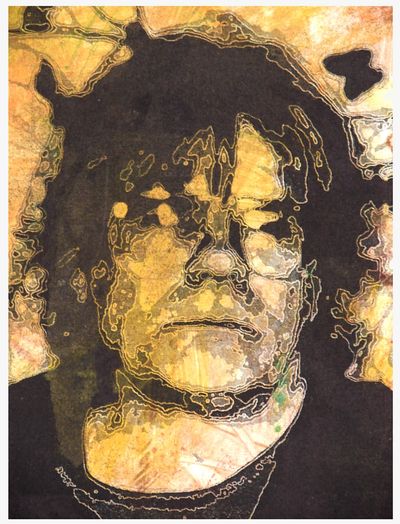Signed in as:
filler@godaddy.com
Signed in as:
filler@godaddy.com
BACKGROUND, PROCESS, AND DISCOVERY
During high school was the beginning of taking photos of my art, family, and friends. These three subject areas have represented an ongoing interest which has defined most of my life. It completes me as a person in ways I sometimes don't understand.
I vividly remember how happy I felt in my late teens when I purchased a Rolleicord Twin Lens Reflex camera. It quickly became a proactive tool for taking B&W photos related to the vicissitudes of my everyday life.
Besides taking pictures during the day, at nightI I developed negatives in the bathroom when my parents were asleep. Converting negatives to photographic paper, and seeing the positive image slowly cover from the whiteness of the paper was, always a wonder to see it reveal itself with photographic detail.
The camera also became a socially acceptable object in the presence of others, softening my anxiety in social situations. The camera always hung above my waist that was always seen became a conversational topic when I had little or nothing to say.
Fast forward to 1995, during my mono-print journey a new printmaking subject entered mind: portraits of family and friends. It quickly became a major interest to go back in time and revisit personal photos decades ago, and some taken with a digital camera. Reverting back to earlier times a few family photos were converted to digital files. Many were augmented adding a creative dimension. Different levels of magnification revealed details that I could not have remembered brought into view unperceived details and more clarity of the portrait-person that I had missed at the time. A bygone time, and to that moment of truth the camera captured and I had regretfully missed.
Bringing family and friends into a world of art to a public viewing was a daunting thought. Who would come to see unknown people-portraits. This would require something spectacular, eye catching. It would require large-scale bleed prints such as 40" h x 30" w and a unique style that would hopefully be compelling. The scale of the portraits, and a creative expressive component I hoped would draw viewers into experiencing a different kind of portraiture, one of unsolicited facial expression and a living truth, and a new visual style for portraiture, heightening their curiosity and experience.
Technically, producing a large-scale print is challenging from the very beginning. Transferring small paper-litho plates to BFK paper seamlessly next to one another, and the handling and inking. Over the years, this unique and seldom used method of printing has become a favorite medium of mine. Fragile plates and unpredictable disasters are always ongoing concerns for producing high-quality prints. The paper-litho method has proved to have an inherent visual character that is radically different from traditional wood and metal. plates.
Celebrating my dear parents, family, and friends within the inviolable realm of art, and in a creative way is my way of honoring my dear parents and friends
I also trust this body of work when seen is an inspiration to young printmakers and artists. That it is a vital, expressive medium, full of creative possibilities beyond traditional methods of printmaking.
John Avakian, Oct. 23, 2018 Revised Sept,26, 2022
SEE SLIDE SHOW BELOW

Detail of David T. See full portrait in slide show below this page.
DAVID A AT CAFE BLAZE Bleed Monoprint 42" h X 29.5" w
We use cookies to analyze website traffic and optimize your website experience. By accepting our use of cookies, your data will be aggregated with all other user data.